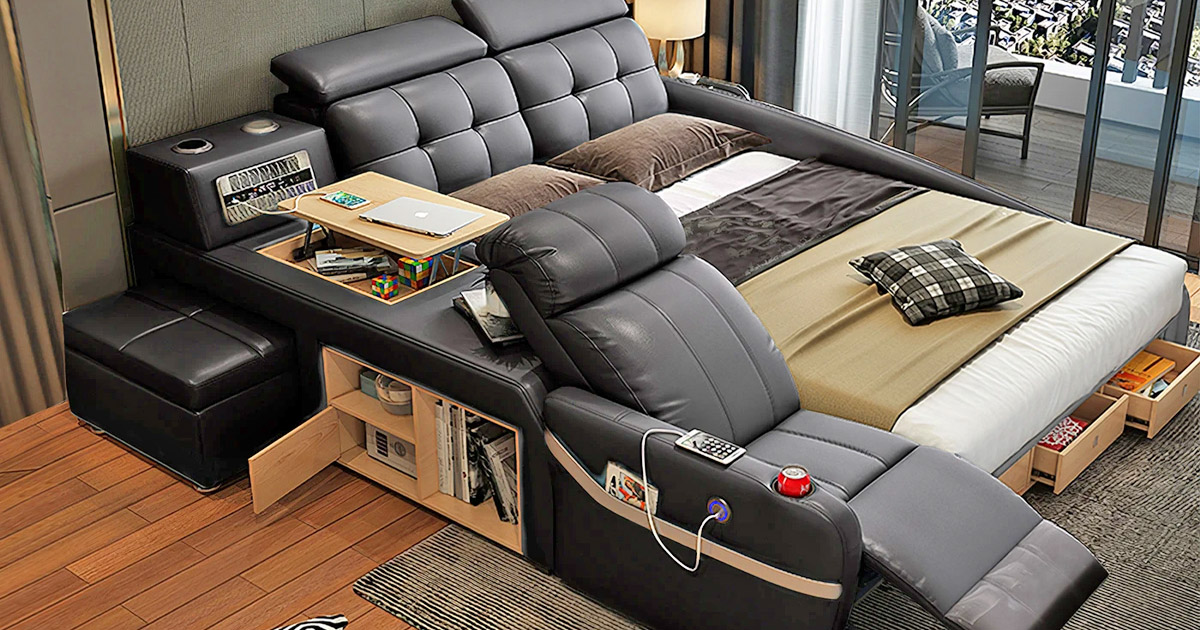Technology is continuously growing. With it comes an expanding number of smart devices designed to make our lives easier and more efficient. The emergence of smart beds is one of the most recent trends in the smart home market. They are designed to monitor and control sleep patterns, as well as provide other features that improve the overall sleep experience. So, what is the connection between smart beds and smart houses? How can these two technologies work together to make homeowners’ lives easier?

The Relationship between Smart Bed and Smart Homes
First, let’s define what we mean by smart beds.
A smart bed is a bed that incorporates technology to monitor and optimize the sleeping experience. Sensors, heating and cooling systems, adjustable hardness and elevation, and even built-in speakers for music or white noise are all possible with this technology. A smart bed’s purpose is to help users sleep better by adjusting temperature, giving correct support, and tracking sleep patterns to indicate any areas for improvement.
Now, let’s consider the concept of smart homes.
A smart home is one that is outfitted with internet-connected equipment and systems that allow for remote monitoring and control. Smart thermostats and lighting, as well as security cameras and voice-activated assistants like Amazon’s Alexa and Google Assistant, are examples of such devices. A smart home is designed to provide a more convenient and efficient living environment that can be controlled from anywhere, at any time.
So, how do smart beds fit into the picture of a smart home?
-
Smart beds can operate in tandem with other smart home gadgets.
Consider that the average individual spends roughly one-third of their life in bed. That’s a considerable amount of time that may be used to improve one’s health and wellness. Smart beds can operate in tandem with other smart home gadgets to create an atmosphere that encourages excellent sleep habits and a healthy lifestyle. A smart thermostat, for example, can be programmed to lower the temperature in the bedroom at night, resulting in a cooler, more comfortable sleeping environment. This can assist to regulate body temperature, which is essential for achieving a good night’s sleep. A smart lighting system can also be programmed to gradually dim as bedtime approaches, signaling to the body that it’s time to unwind and prepare for sleep.
-
Another method smart mattresses and smart homes might collaborate is through the use of sleep tracking equipment.
Several smart mattresses include sensors that can monitor movement, heart rate, and other data crucial for understanding sleep habits. This information can be transferred to a smartphone app. Then, it can be used to identify areas for improvement and provide individualized sleep suggestions. As a result, smart beds can assist manage the sleep environment and improve overall sleep quality. Nevertheless, the advantages of smart beds do not end there. They can also be utilized to encourage a better lifestyle by offering features such as massage treatment and adjustable firmness, which can aid in the relief of stress and tension in the body.
-
Furthermore, some smart mattresses are constructed with technology that might assist alleviate typical sleep issues.
For example, the Sleep Number360 smart bed includes a “snore detection and response” feature. This can detect snoring and adjusts the bed position to alleviate the problem. Similarly, the Eight Sleep Pod smart bed is intended to manage temperature and give targeted cooling and heating to various sections of the bed, thereby reducing hot flashes and night sweats.
Conclusion
Ultimately, the interaction between smart beds and smart homes is mutually beneficial and complementary. Smart mattresses can collaborate with other smart home technologies to provide an optimal sleeping environment that promotes health and wellness. Smart beds can help to enhance overall sleep quality and produce a more pleasant and restorative night’s sleep by adjusting temperature, delivering individualized recommendations, and easing common sleep difficulties.